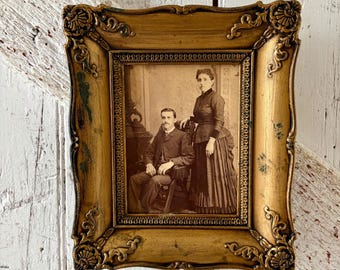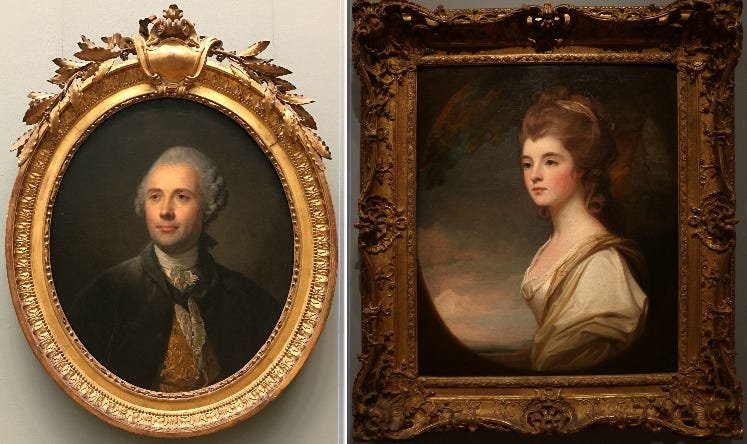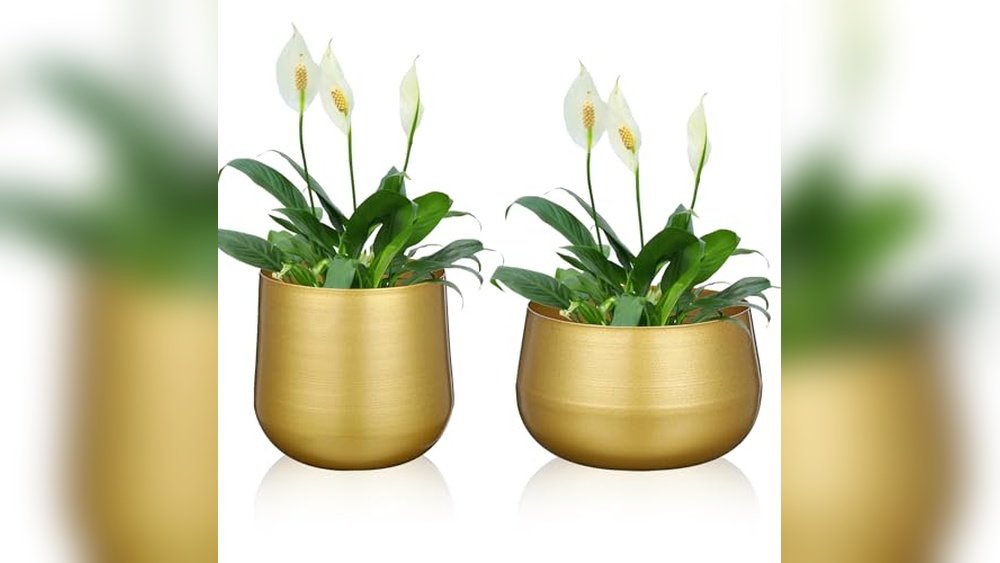Have you ever paused to wonder about the story behind the picture frame that holds your favorite photo or artwork? Antique picture frames are more than just decorative borders—they carry rich histories that span centuries and styles.
Understanding their origins can transform how you see your framed treasures, adding layers of meaning and value to your collection. You’ll discover fascinating facts about the evolution of picture frames, how to spot genuine antiques, and why these frames remain timeless pieces of art themselves.
Ready to unlock the secrets your frame might be hiding? Let’s dive into the captivating history of antique picture frames together.
Origins Of Picture Frames
Picture frames have a long and rich history. They began as simple borders that protected and enhanced artworks. Over time, frames evolved into intricate designs that reflected art styles and cultural values. Their origins trace back to ancient times, especially in religious art.
Understanding the early uses and development of picture frames reveals their importance in art and history. These frames were not just decorative but served practical and symbolic purposes.
Early Uses In Religious Art
Picture frames first appeared prominently in religious settings. Ancient temples and churches used frames to hold sacred images. These frames helped focus attention on holy figures and stories. They also protected fragile paintings and icons from damage. Often, frames were made from wood or stone and decorated with gold leaf. This made the art more precious and respected.
Medieval Frame Development
During the Middle Ages, frames became more common and complex. Artists and craftsmen created frames that matched the style of the artwork. Gothic frames, with pointed arches and detailed carvings, became popular. Frames began to include symbols and motifs that added meaning. This period saw the frame as part of the entire artwork experience. Frames helped tell stories and guided viewers’ emotions.
Renaissance To Baroque Frames
The period from the Renaissance to the Baroque marked a major shift in picture frame design. Frames became more than just borders; they turned into works of art. This era reflects the changing tastes in art and culture. The frames often matched the grandeur and detail of the paintings they held. Both Renaissance and Baroque frames show craftsmanship and style that collectors admire today.
During these times, frames grew in complexity and decoration. Artists and craftsmen focused on balance, symmetry, and rich ornamentation. The materials and techniques used added to the frames’ lasting beauty. Each frame tells a story about the period’s art and society.
Renaissance Frame Characteristics
Renaissance frames are known for their classical beauty and harmony. They often feature simple, clean lines with balanced proportions. Common motifs include acanthus leaves, laurel wreaths, and egg-and-dart patterns. These designs reflect the influence of ancient Greek and Roman art. Gilding was popular, adding a bright gold finish to the wood. The frames emphasize symmetry and order, matching the Renaissance ideals of art and architecture.
Baroque Ornate Designs
Baroque frames contrast sharply with Renaissance simplicity. They are bold, dramatic, and highly decorated. Curves, scrolls, and floral patterns cover the frames in rich detail. Carvings often appear deep and three-dimensional. Gilded finishes are thick and bright, enhancing the frame’s opulence. The frames draw the eye and create a sense of movement. They reflect the Baroque love for grandeur and emotional expression.
Styles Through The Centuries
Antique picture frames tell a rich story through their evolving styles. Each century brought distinct designs reflecting art movements and cultural shifts. These frames do more than hold pictures; they capture the spirit of their time. From ornate details to simple elegance, their styles reveal history in wood and gilding. Understanding these styles helps appreciate antique frames as true works of art.
Mannerist And Rococo Influences
Mannerist frames emerged in the late Renaissance, featuring elongated forms and unusual proportions. They often displayed dramatic curves and intricate carvings. The style aimed to surprise and delight with its elegance and complexity.
Rococo frames followed in the 18th century. They showed playful and asymmetrical designs with floral motifs. Lightness and grace defined Rococo, with soft pastel colors and gilded finishes. These frames were popular in French aristocratic homes.
Neoclassical And Victorian Frames
Neoclassical frames appeared in the late 18th century, inspired by ancient Greece and Rome. They emphasized symmetry, straight lines, and restrained decoration. Common motifs included laurel wreaths, columns, and urns, reflecting a return to classical ideals.
Victorian frames, from the 19th century, embraced heavy ornamentation and bold details. They mixed different styles, including Gothic and Renaissance revival. Dark woods, rich carvings, and elaborate patterns made Victorian frames highly decorative and dramatic.

Credit: www.amazon.com
Materials And Craftsmanship
Antique picture frames reveal stories through their materials and craftsmanship. They showcase the skills and choices of past artisans. Each frame tells a tale of its time and place. Understanding their construction helps appreciate their beauty and value.
Wood Types And Carving Techniques
Wood was the main material for antique frames. Common woods included oak, walnut, and mahogany. These woods offered strength and fine grain for detailed carving. Artisans used hand tools to create intricate patterns and shapes. Carving techniques varied by region and era. Some frames featured deep relief, while others showed delicate, shallow designs. The wood’s texture and color added character to each frame.
Gilding And Decorative Finishes
Gilding added luxury to many antique frames. Thin sheets of gold leaf covered the wood surface. Craftsmen carefully applied the leaf to highlight carvings and edges. Besides gold, silver and bronze leaf were also used. Other finishes included paint, stain, and lacquer. These enhanced the frame’s color and protected the wood. Decorative details like punchwork and tooling enriched the frame’s surface. Such finishes gave frames a rich, timeless look.
Identifying Antique Frames
Identifying antique picture frames involves more than just admiring their beauty. It requires careful observation and knowledge of specific details. These details reveal the frame’s true age and origin. Understanding these clues helps collectors and enthusiasts find genuine antiques.
Examining The Frame’s Back
The back of an antique frame tells a story. Look for old wood that may show cracks or warping. Signs like wormholes or uneven surfaces suggest age. Check the nails or screws; handmade nails or square-headed nails indicate older frames. Modern staples or shiny screws usually mean a newer frame. The backing material can also help. Paper backing that looks faded or brittle is common in antique frames.
Recognizing Craftsman Marks
Craftsman marks are small details that reveal the maker’s identity. These marks can be stamps, signatures, or labels on the back of the frame. Sometimes they are carved or painted directly on the wood. A craftsman’s mark often includes the maker’s name, workshop, or a date. These marks add value and confirm authenticity. Frames without marks may still be old but harder to trace.
Signs Of Age And Authenticity
True antique frames show signs of wear that cannot be faked easily. Look for natural fading or darkening of the wood and gilding. Chips, cracks, and slight warping occur over time. Paint or gold leaf may peel or rub off in places. The frame’s joints should show aging too, with some looseness or shrinkage. Smell the wood; old frames often have a distinct, aged scent. These signs confirm the frame’s authenticity and age.

Credit: www.etsy.com
Dating Vintage Frames
Dating vintage picture frames reveals their story and origin. It requires close observation of details. Each frame holds clues in its construction and design. Identifying these hints helps estimate the frame’s age. The process is part science and part art, connecting us to past eras.
Hardware And Joinery Clues
Examine the hardware on the back of the frame. Old frames often have hand-forged nails or screws. Machine-made fasteners appear in frames after the late 19th century. Look for signs of aging like rust or patina on metal parts. The joinery style also tells a tale. Dovetail joints signal older craftsmanship. Simple butt joints usually mean more recent manufacture. Glue and staples suggest modern assembly methods. These details help narrow down the period the frame was made.
Stylistic And Material Indicators
Materials reveal much about a frame’s era. Early frames often used solid wood with hand-carved details. Later frames might include molded plaster or composite materials. The style reflects historical art trends. Ornate Baroque frames show complex scrollwork and gilding. Simpler, geometric frames hint at Arts and Crafts or Art Deco styles. Paint colors and finishes also provide clues. Gold leaf indicates luxury and age. Painted finishes may fade or crack over decades. Understanding these factors aids in dating vintage frames accurately.
Value Factors For Antique Frames
Antique picture frames hold more than just memories. Their value depends on many factors. Collectors and enthusiasts assess these elements carefully to determine worth. Understanding these factors helps appreciate each frame’s uniqueness and history.
Material Quality And Condition
High-quality materials raise an antique frame’s value. Frames made from solid wood, gilt, or bronze are prized. The condition also plays a big role. Frames with minimal damage and original finishes are worth more. Signs of repair or heavy wear reduce value.
Historical Significance
Frames tied to a historical period attract collectors. Styles from the Renaissance, Baroque, or Victorian eras are notable. Frames that reflect artistic movements or famous craftsmen gain higher value. Proven connection to a specific time makes a frame special.
Rarity And Provenance
Rare frames often have greater worth. Limited production or unique designs increase rarity. Provenance, or a frame’s history of ownership, adds to value. Frames linked to famous artists or important events are highly sought after. Documentation verifying provenance boosts collector interest.

Credit: theframeblog.com
Preserving Antique Frames
Preserving antique picture frames helps protect their charm and value. These frames tell stories of past eras through their design and craftsmanship. Keeping them in good condition requires care and knowledge. Proper preservation enhances their beauty and ensures they last for generations.
Restoration Best Practices
Restoration should be gentle and respectful of the original frame. Use soft brushes to clean dust and dirt from crevices. Avoid harsh chemicals that may damage wood or gilding. Repair cracks or loose joints with wood glue suited for antiques. Match repair materials closely to the original to keep the frame authentic. Work slowly and carefully to avoid removing original finishes.
Maintaining Original Features
Preserve the frame’s original paint, gilding, and carvings as much as possible. Do not over-clean or strip away old layers that show age and character. Protect the frame from sunlight and moisture, which can cause fading and warping. Use acid-free backing and UV-protective glass when framing artwork. Handle frames with clean hands or gloves to avoid oils and dirt. Keeping original features intact keeps the frame’s history alive.
Collecting And Buying Tips
Collecting antique picture frames can be rewarding and fun. Knowing how to buy wisely saves money and ensures quality. Antique frames carry history and charm that modern frames lack. This guide offers tips for collectors to find genuine pieces and avoid common pitfalls.
Where To Find Antique Frames
Start your search at local flea markets and antique shops. Estate sales often have unique frames at good prices. Online marketplaces also offer a wide range, but check the seller’s reputation first. Auctions can provide rare finds, but bids can rise quickly. Visit galleries that specialize in vintage art for expert advice.
Avoiding Reproductions
Check the frame’s back for signs of age, like wear or old nails. Genuine antiques often have small imperfections from years of use. Look for craftsman marks, labels, or stamps with dates. Beware of frames that look too new or perfect. Ask the seller about the frame’s history and materials used.
Assessing Investment Potential
Frames made from quality materials hold value longer. Pieces from well-known makers or specific periods are usually more valuable. Condition matters; damaged frames might cost less but can be harder to sell. Rare styles or unique designs attract collectors. Research market trends to understand which frames are rising in value.
Frequently Asked Questions
How To Tell The Age Of A Picture Frame?
Examine the frame’s back for age signs like wormholes, warping, or old hardware. Check for craftsman marks or dated labels. Analyze materials and style to estimate its period.
How To Identify Old Picture Frames?
Examine the frame’s back for craftsman marks, labels, or stamps. Check for aged wood, old hardware, wormholes, and warping. Look for classic shapes and traditional materials like gilt or plaster. These signs help identify old picture frames accurately.
How To Tell If An Antique Frame Is Valuable?
Check the frame’s back for age marks, old hardware, or wear. Identify materials like wood or plaster. Look for classic shapes and genuine gilding. These signs often indicate value in antique frames.
How Do You Date Vintage Picture Frames?
Date vintage picture frames by examining materials, craftsmanship, hardware, and labels on the back. Check for age-related wear, style, and maker’s marks.
Conclusion
Antique picture frames tell stories from the past. Each frame shows unique styles and craftsmanship. They reflect the culture and art of their time. Collecting these frames keeps history alive and visible. Understanding their history helps appreciate their true value.
Antique frames add charm and character to any space. They connect us to different eras and traditions. Preserving these frames helps protect art and memories. Exploring their history makes antique frames even more special.







